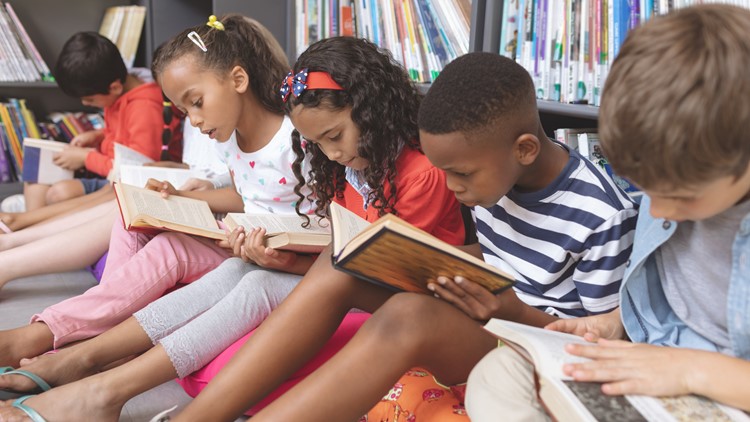CALIFORNIA, USA — The baby’s father was the first to get sick.
As a cook in Los Angeles, Ramon Lopez never stopped going to the restaurant while other kinds of workers could log in from home. He ran all the family’s errands, buying groceries and putting gas in the car.
He developed a fever, dry cough and body pain. When he lost his sense of smell, his wife, Florida Santiago, took him to a hospital where he tested positive for COVID-19, she recounted.
A week later, 8-month-old Jesus started fussing and had a similar dry cough for several days. Thankfully, he never got a fever, his mother said, but Baby Jesus tested positive. Then Santiago got sick, too, and is awaiting test results for herself and the couple’s three other children.
“Since this began we have been trying very hard to take care of the kids and ourselves,” said Santiago, whose family of six shares a one-bedroom apartment. “The only thing we can think is that when my husband went out to work. But we just don’t know.”
As COVID-19 ravages California and the nation, the number of children infected is also rising, especially among Latino children. They are testing positive at higher rates than other groups of children, accounting for the majority of all California cases among those under 18. Latino minors make up 67% of the cases where race/ethnicity is known, despite being only 48% of the state’s population of kids.
That’s nearly 9,700 Latino children who have been stricken by the virus, according to data from the California Department of Public Health. Nearly a quarter of them live in Los Angeles County—and likely more, since neither the state nor the county have complete race and ethnicity records for children who test positive.
Statewide, kids under 18 make up 8% of all coronavirus cases and, so far, none of the deaths, according to the state. Nationwide, more than 165,000 children have tested positive, making up 7% of the total cases; at least 58 have died, according to the American Academy of Pediatrics.
Medical experts say the rate of infection among Latino kids is a reflection of several factors, laid bare by the pandemic.
“A good proportion of Latinos are essential workers. They have to go and work in sectors that require them to be exposed to the virus and often without personal protective equipment,” said Dr. Sergio Aguilar-Gaxiola, director of the UC Davis Center for Reducing Health Disparities.
“They tend to live in close quarters, so if the breadwinner goes out and comes home they often come to a household in which there are many people and … cannot keep appropriate distance if they are positive.”
Many Latinos also lack access to health care and have higher rates of underlying conditions like diabetes and asthma, which can lead to complications for those who contract COVID-19.
Among adults, Latinos account for more than half of California’s cases and 42% of the deaths, despite being only 36% of the population. Nationally, Latinos make up 35% of the positive cases, and are 18% of the population, according to the Centers for Disease Control and Prevention.
California physicians who treat Latino families said they were not surprised to see their littlest patients reflected in the case numbers, given their parents’ jobs and housing conditions.
“The good news is that most of those children seem to be doing clinically fine. Most are not getting hospitalized or need step-up supportive care,” said Dr. Zarin Tejani, a pediatrician at Venice Family Clinic. “What we are seeing is they are getting sick from someone in their home they are exposed to.”
But physicians worry that if the numbers continue to climb, some children could be severely affected. A rare post-infection multisystem inflammatory syndrome has been detected in a growing number of children across the country that has been connected to coronavirus infection. Kids who get the syndrome are landing in the hospital with symptoms that include fever, rash and abdominal pain. If not properly treated, a child’s heart and major organs can be damaged.
In California, the Department of Public Health said it does not receive information from counties regarding all of the children who have been hospitalized. Of the data it has received, 143 children who tested positive were hospitalized. Of those, 95— or 66%— were Latino.
“As we have more kids who become positive, my concern is it’s a matter of time before we may see increasing deaths in our younger population and that may include kids,” said Dr. Shunling Tsang, Associate Medical Director of Quality for Riverside University Health System.
Latinos are not genetically predisposed to the virus but the circumstances of their lives expose them to coronavirus more than other groups, said Dr. Margarita Loeza, a family physician at the Venice Family Clinic.
“The poorest will carry the burden of disease,” she said. “Our country is set up so unjustly that this is where we are.”
Many Latinos work in low-paying fields that require attendance—service and restaurant jobs, farm work, factories and health care jobs—placing them more at risk.
While not all Latinos live in poverty, many struggle to make ends meet and even more have been pushed to the financial brink since the pandemic began. According to a survey in April by the Pew Research Center, about half of Latinos report that they or someone in their household lost a job or experienced a pay cut since the pandemic began, compared to a third of all adults.
For Joanna, who asked that her last name not be used, coronavirus came home with her husband, who works in construction in Los Angeles.
She and her 18-month-old daughter tested positive.
“She started with a fever, and because her dad only had what we thought was a stomach bug, I thought the fever was from her teething,” Joanna said. “It was very scary because then she had two seizures and I had to take her to the emergency room.”
Her 3-year-old has been symptom-free and Joanna is trying to keep it that way by keeping the children apart, wearing a mask and disinfecting their home regularly.
Research is showing that, among those getting sick, going to work is the biggest factor. A study in San Francisco’s Mission District, conducted by the University of California, San Francisco, with community organizations, tested 3,000 people—-about 44% of whom were Latino. The results showed that Latinos accounted for nearly all of the infections, and nearly all of them said they could not work from home.
“The virus exploits pre-existing vulnerabilities in our society,” said Dr. Diane Havlir, chief of the UCSF Division of HIV, Infectious Diseases and Global Medicine at Zuckerberg San Francisco General Hospital and Trauma Center.
One of those vulnerabilities is housing conditions, Aguilar-Gaxiola said. Latino families may live in multigenerational households or share apartments with other families, making social distancing and self-isolation non-existent.
Some families are able to separate or stay with other relatives, but it’s rare, hard to do and causes increased stress, said Michelle Aguilar, a pediatrician at Venice Family Clinic.
“There is no way to do ideal isolation in shared homes, multiple family members sharing a single room or multigenerational housing,” Aguilar said. “It’s so many layers of difficulty and stress that this pandemic has brought to our families.”
A study by the Public Policy Institute of California in May found that essential workers who could not work at home more often live in crowded housing. And it is more common among Latinos, especially those working in farming and food preparation.
When Santiago’s husband was diagnosed— and their 8-month-old son later tested positive—- her husband would sleep in the living room. She took the bedroom with the four children, but maintaining distance in a one-bedroom apartment has been difficult. If their three older children test negative, Santiago said they will stay with her sister until the rest of the family is in the clear.
As the state focuses on the rising number of cases, Gov. Gavin Newsom announced a new public service awareness campaign on Thursday. It includes TV and radio spots in Spanish and other languages, as well as billboards to encourage people to wear masks and maintain distance.
Some county health officials are also ramping up efforts to reach Latinos, especially in Spanish, said Christine Ramsey, spokeswoman for Riverside University Health System.
Riverside has already been doing outreach via Spanish public service announcements on television and radio and via billboards and now intends to intensify those efforts. More recently, the county launched an electronic Spanish weekly newsletter related to COVID-19.
Having that information could be critical, given another factor.
Latinos have a higher rate of chronic conditions including diabetes, hypertension, asthma and other conditions that lead to more complications when layered with COVID-19, said Aguilar-Gaxiola, who called the confluence a “perfect storm.”
And that is also true for kids. Latino children have a higher risk of developing diabetes and obesity, which could create complications if they are infected, he said.
While no Latino minors have died of the disease in California, young adults and those of parenting age have become critically ill and died, leaving children without parents, Aguilar-Gaxiola said.
Latinos 18 to 34 make up 58% of the positive cases and nearly a third of the deaths, despite being 45 percent of Californians in this age group. And among 35- to 49-year-olds, Latinos make up 59% of the cases and more than three-quarters of the deaths, while only accounting for 41 percent of Californians this age.
When 30-year-old Joanna was so sick with chills, a headache, fatigue and weakness, she took days off working from home to stay in bed. She said she wondered what would happen if the virus took a turn for the worst.
“You worry about your kids, you wonder what is going to happen to them if something happens,” she said. “As a mother, I know no one is going to take care of my kids better than I can.”



